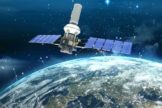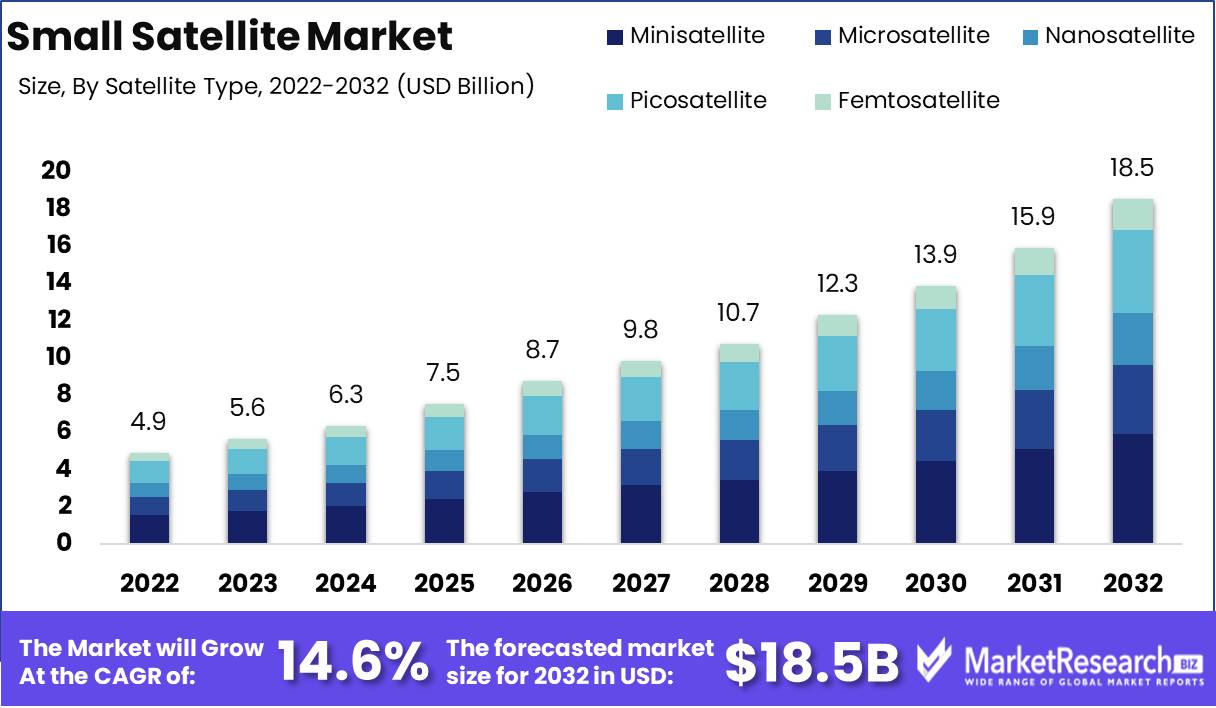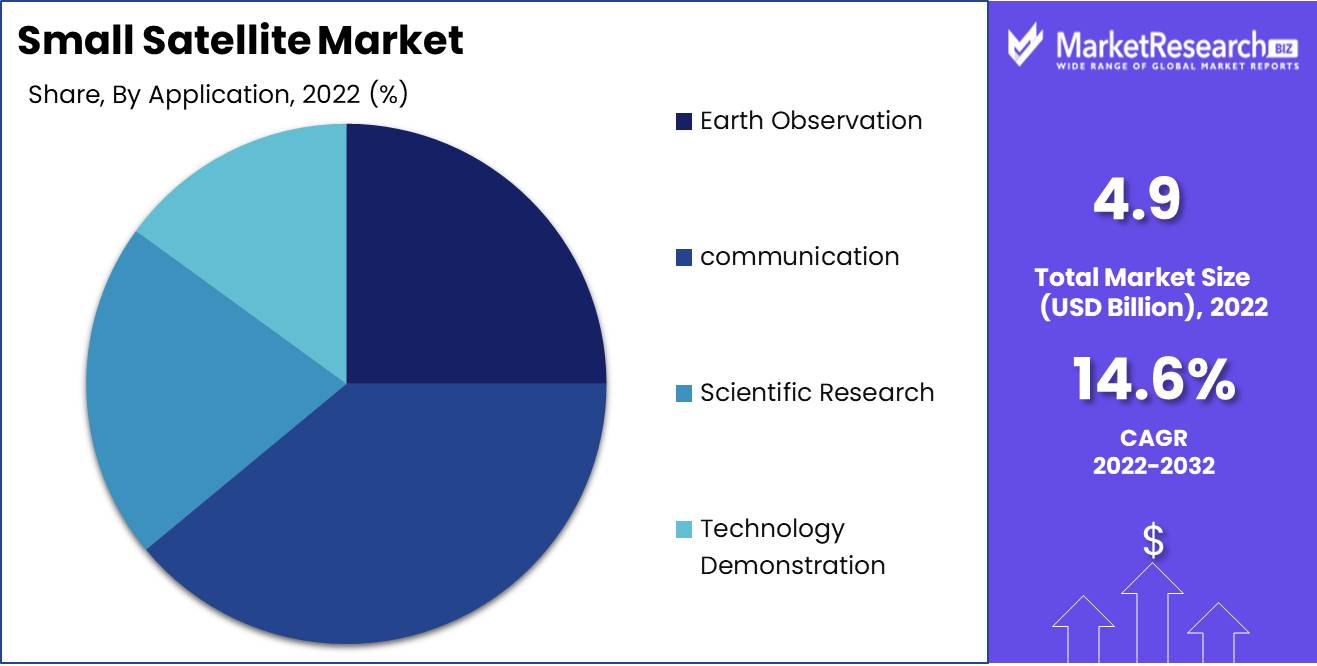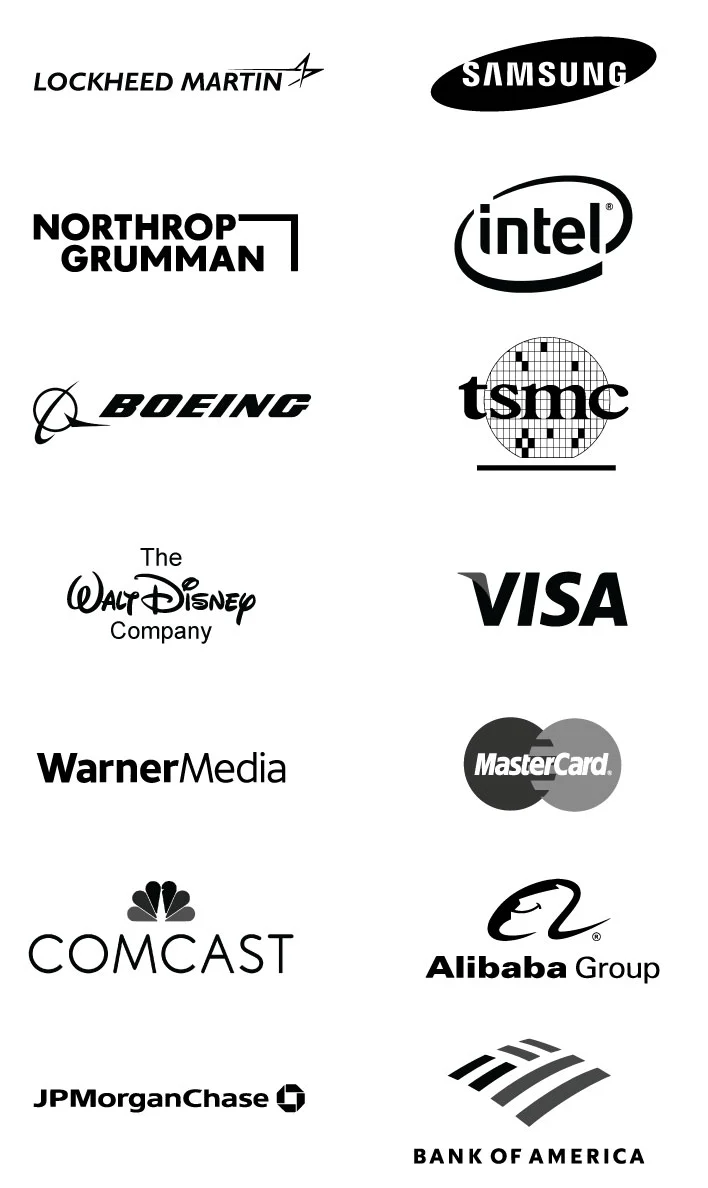
Small Satellite Market By Satellite Type (Minisatellite, Microsatellite and Other ), By Component (Structures, Payload, Solar Panel And Antenna System and Others), By Application Type (Earth Observation, Telecommunication and other), By End-User( Civil, Defense and Other), By Region And Companies - Industry Segment Outlook, Market Assessment, Competition Scenario, Trends, And Forecast 2023-2032
-
11874
-
Aug 2023
-
154
-
-
This report was compiled by Vishwa Gaul Vishwa is an experienced market research and consulting professional with over 8 years of expertise in the ICT industry, contributing to over 700 reports across telecommunications, software, hardware, and digital solutions. Correspondence Team Lead- ICT Linkedin | Detailed Market research Methodology Our methodology involves a mix of primary research, including interviews with leading mental health experts, and secondary research from reputable medical journals and databases. View Detailed Methodology Page
-
Quick Navigation
Report Overview
Small Satellite Market size is expected to be worth around USD 18.5 Bn by 2032 from USD 4.9 Bn in 2022, growing at a CAGR of 14.6% during the forecast period from 2023 to 2032.
Small satellite has ushered in a revolutionary shift in the space industry In recent years. In this report, we will attempt to provide a comprehensive overview of the small satellite market, including its significance and benefits, outstanding breakthroughs, capital expenditure, and integration into products/services, its remarkable expansion and applications, the industries investing in it, key market drivers, ethical dilemmas and prudent practises, and the commercial application of small satellites.

The small satellite is characterised by the production, design, and deployment of sub-500 kilogramme satellites. These miniature satellites are known as nanosatellites, microsatellites, and picosatellites, and they serve a variety of functions, including scientific research, communication, navigation, and surveillance. As a consequence of the miniaturisation of electronic components and the escalating demand for satellite services, the small satellite market has expanded exponentially, resulting in reduced costs for manufacturing, launching, and operating small satellites.
The limitless potential of the small satellite market has piqued the interest of numerous industries that recognise the adaptability and growth prospects inherent to small satellites. These sectors include, among others, the telecommunications, military, scientific research, and earth observation industries. Small satellites have facilitated a substantial expansion in the capacities of these industries and stimulated the development of new applications.
Driving factors
Demand on the rise for small satellites based in LEO.
In the near future, it is anticipated that the small satellite market would expand quickly. This growth is being driven by several factors, including the increasing demand for low-earth orbit (LEO) based small satellites and the growing demand for satellite-based communication services. Both of these factors are contributing to this growth. The production and launch of small satellites have become more efficient in recent years thanks to advancements in technology.
As a result, it is now much simpler and less expensive to place small satellites in orbit. In addition, there has been a growing demand for data relating to earth observation and remote sensing, which has resulted in an increased need for small satellites in a variety of different industries.
Demand for satellite-based communication services that is continuing to rise.
New prospects have presented themselves to companies that are interested in capitalising on space-based technologies as a result of the growing number of commercial uses for small satellites across a variety of sectors. These very small satellites have a wide range of potential applications, from agriculture and mining to environmental monitoring and emergency management.
The small satellite market, however, may be impacted in the future by a number of laws. Regulations governing the application of space-based technology are notoriously difficult to understand and are in a state of perpetual flux. It is anticipated that these requirements will become more stringent as more small satellites are sent into orbit. This could have an impact on the expansion of the small satellite market.
The development of new technologies in recent years has made it possible to manufacture and operate small satellites.
Small satellite market may also be significantly impacted by emerging technologies such as artificial intelligence and machine learning. These technologies have the potential to be exploited to improve the performance and efficiency of small satellites, which may in the future lead to an increase in demand for those particular types of spacecraft.
Restraining Factors
Absence of unified international regulations and government policies
The lack of unified regulations and government policies across nations is one of the most significant factors restraining the small satellite market. Small satellite operators encounter difficulties navigating the complex network of country-specific national regulations and policies. Inconsistent regulations and policies can generate legal uncertainty and restrict opportunities for international investment and cooperation.
In addition, government policies and regulations frequently favour existing commercial providers, preventing new entrants into the small satellite market. To address this issue, governments must establish a comprehensive regulatory framework that promotes equitable competition, facilitates international cooperation, and addresses security and safety concerns.
Type Analysis
The small satellite market is expanding at a phenomenal rate, with the Mini Satellite Segment dominating the market. The Mini Satellite Segment is regarded as the fastest-growing segment of the small satellite market, which is expected to record a significant growth rate in the coming years. Ideal for a variety of applications, the segment is comprised of satellites weighting between 100 kg and 500 kg. These small satellites can be launched on demand and offer unparalleled flexibility, affordability, and dependability.
Emerging economies in Africa, Asia-Pacific, and South America are undergoing accelerated economic development, which is driving the adoption of the Mini Satellite Segment. The increase in disposable income, innovation, and robust technology infrastructure in these regions have created a favourable environment for small satellite deployment. In addition, government initiatives in these nations pertaining to space exploration and research and development have played a substantial role in promoting the adoption of the Mini Satellite Segment.
Component Analysis
As indispensable satellite components, the Structures Segment dominates the small satellite market. Due to the high cost of developing and manufacturing satellite structures, this market segment retains the largest value-based market share. The Structures Segment consists of essential components such as the satellite bus, solar panels, intersatellite connections, and the payload. Satellites must have sturdy structures to withstand the harsh conditions of space, making the structures segment a vital part of the small satellite market.
The Structures Segment is also affected by the economic growth in emerging economies. As emergent economies increase their space exploration capabilities, they will require more sophisticated satellite structures to withstand the harsh conditions of space exploration. As satellite operators concentrate on operational efficiency and cost-effectiveness, it is anticipated that demand for the Structures Segment will rise over time.
Application Analysis
As communication is a fundamental aspect of the small satellite market, the Communication Segment dominates. The communication segment is a necessary component of space exploration because satellites communicate with earth-based devices. Satellites facilitate communication between devices on the ground, making them indispensable to industries like telecommunication, television, and defence.
The Communication Segment is also affected by the growth of emergent economies, as these economies require precise data communication. Due to the expansion of telecommunications and the Internet, emerging economies need dependable communication systems for business, healthcare, and education.It is anticipated that the use of the Communication Segment will increase further in emerging economies as more applications requiring dependable information transmission in remote locations are developed.

Key Market Segments
By Satellite Type
- Minisatellite
- Microsatellite
- Nanosatellite
- Picosatellite
- Femtosatellite
By Component
- Structures
- Payload
- Solar Panel and Antenna System
- Propulsion System
- Electric Power System
- Others
By Application
- Earth Observation
- communication
- Scientific Research
- Technology Demonstration
By End-User
- Civil
- Defense
- Commercial
- Government
Growth Opportunity
Satellite Internet Access in Underserved Areas Fosters Market Growth
In many regions, the absence of broadband connectivity has created a digital divide that impedes economic development and growth. The creation of a satellite network to provide Internet access in these regions has generated new opportunities and stimulated investment in the tiny satellite market.
This technology has the potential to construct a completely new internet infrastructure that can connect remote and underdeveloped regions to the rest of the globe. Smallsats are ideal for such applications because they are less expensive to launch and simpler to manage than conventional satellites. The development of this technology presents a tremendous opportunity for the tiny satellite market to expand.
Adoption of 3D-Printed Smallsat Components to Drive Market Expansion
The advent of 3D printing has revolutionized the small satellite industry. It has made it possible to reduce manufacturing costs and produce satellite components more efficiently than with traditional techniques. This has also allowed for the construction of much smaller satellites, reducing launch costs even further.
The incorporation of 3D-printed components in the production of Smallsats has created new opportunities for market innovation and expansion. It has enabled rapid prototyping and increased design flexibility, enabling manufacturers to create innovative, one-of-a-kind consumer solutions.
Latest Trends
Cost Reduction in the Design and Production of Satellites
One of the most significant trends affecting the small satellite industry is the need to reduce the cost of satellite design and production. To become more competitive, businesses must discover ways to reduce costs without sacrificing quality. This trend has led to the development of innovative satellite design and production techniques, such as 3D printing and decreased launch costs.
Rapid Innovation in Launch Vehicles and Services
Another trend that is helping to shape the small satellite industry is the rapid development of new launch vehicles and services. The development of reusable rockets by companies such as SpaceX and Blue Origin reduces launch costs and facilitates the launching of small satellites. In addition, new launch services specializing in small satellites, such as Virgin Orbit and Rocket Lab, are emerging.
Regional Analysis
A Dominant Presence in the Global Small Satellite Market in North America
As we progress towards a more globalized economy, a company's success is increasingly determined by its market presence and market share. The North American region has emerged as a dominant player on the Global Small Satellite Market, with a larger market share and stronger market presence than any other region in the globe. In this article, we examine why North America has become the preferred location for major participants in the Global Small Satellite Market, as well as how it will continue to hold its position in the future.
The economies of the United States, Canada, and Mexico are all stable, diverse, and prosperous. The U.S. economy is the largest in the world, and Canada and Mexico are among the top 15 economies worldwide. The region's gross domestic product exceeds $23 trillion, or roughly 28% of the global GDP. The combination of a solid economic foundation and an entrepreneurial character has fostered the expansion of innovative, dynamic businesses across a variety of industries.

Key Regions and Countries
North America
- US
- Canada
- Mexico
Western Europe
- Germany
- France
- The UK
- Spain
- Italy
- Portugal
- Ireland
- Austria
- Switzerland
- Benelux
- Nordic
- Rest of Western Europe
Eastern Europe
- Russia
- Poland
- The Czech Republic
- Greece
- Rest of Eastern Europe
APAC
- China
- Japan
- South Korea
- India
- Australia & New Zealand
- Indonesia
- Malaysia
- Philippines
- Singapore
- Thailand
- Vietnam
- Rest of APAC
Latin America
- Brazil
- Colombia
- Chile
- Argentina
- Costa Rica
- Rest of Latin America
Middle East & Africa
- Algeria
- Egypt
- Israel
- Kuwait
- Nigeria
- Saudi Arabia
- South Africa
- Turkey
- United Arab Emirates
- Rest of MEA
Key Players Analysis
Small satellites are revolutionizing exploration and communication in space. Due to the increase in demand, main market players are emerging, each with their own set of strengths and offerings.SpaceX is a prominent player in the small satellite market. The Falcon 9 rocket of the corporation SpaceX has been used to launch hundreds of small satellites into orbit. The SpaceX Starlink constellation of satellites in low-earth orbit seeks to bring high-speed internet to remote regions of the globe.
Planet Labs is another major participant in the small satellite market. The company has more than 120 cubesats in orbit, which take daily images of Earth. The company's high-resolution imaging technology has been implemented in a variety of applications, including agriculture, emergency response, and urban planning.BlackSky Global seeks to provide real-time Earth imaging and intelligence services with a focus on remote sensing. With high-resolution sensors, the company's constellation of small satellites can capture images with a resolution of up to one meter. Several government agencies have partnered with BlackSky for applications such as intelligence gathering and disaster response.
In addition to Blue Origin, OneWeb, Astrocast, and Sky and Space Global, notable small satellite market competitors include Blue Origin, OneWeb, and Sky and Space Global. These businesses provide an extensive selection of services, including global internet connectivity, data analytics, low-latency communication, and Earth monitoring.
Top Key Players in Small Satellite Market
- Harris Corporation
- Airbus Defence and Space SA
- Boeing
- GeoOptics, Inc.
- SpaceX
- Lockheed Martin Corporation
- Millennium Space Systems Inc.
- Northrop Grumman Corporation
- OHB SE
- OneWeb LLC
- Sierra Nevada Corporation
Recent Development
- In 2021, In recent years, the small satellite market has witnessed considerable advances, with prominent players such as SpaceX, Sierra Nevada Corporation, OneWeb, and Amazon making notable contributions to these innovations. In 2021, SpaceX began the Transporter-2 mission, which carried a record-breaking 88 small satellites for 20 different clients.
- In 2021, Sierra Nevada Corporation made the announcement that it will be launching its new Dream Chaser spaceplane. This spaceplane is intended to transport freight as well as personnel to and from low Earth orbit. This is going to open up a whole new world of opportunities for things like remote sensing, scientific research, and other applications that require regular trips to space.
- In 2020, As part of its strategy to give internet connectivity to people all over the world, OneWeb launched its first batch of 36 small satellites in the year 2020.
- In 2020, Amazon Kuiper, the company's new satellite internet service, is the company's entry into the competitive market. The firm intends to provide global internet connectivity through the deployment of a constellation of small satellites, so posing a challenge to conventional internet service providers and increasing the number of people who have access to the internet.
Report Scope
Report Features Description Market Value (2022) USD 4.9 Bn Forecast Revenue (2032) USD 18.5 Bn CAGR (2023-2032) 14.6% Base Year for Estimation 2022 Historic Period 2016-2022 Forecast Period 2023-2032 Report Coverage Revenue Forecast, Market Dynamics, COVID-19 Impact, Competitive Landscape, Recent Developments Segments Covered Segmentation by Satellite type, Minisatellite, Microsatellite, Nanosatellite, Picosatellite, Femtosatellite, Segmentation by Component, Structures, Payload, Solar Panel and Antenna System, Propulsion System, Electric Power System, Others, Segmentation by application, Earth Observation, communication, Scientific Research, Technology Demonstration, Segmentation by end-user, Civil, Defense, Commercial, Government Regional Analysis North America – The US, Canada, & Mexico; Western Europe – Germany, France, The UK, Spain, Italy, Portugal, Ireland, Austria, Switzerland, Benelux, Nordic, & Rest of Western Europe; Eastern Europe – Russia, Poland, The Czech Republic, Greece, & Rest of Eastern Europe; APAC – China, Japan, South Korea, India, Australia & New Zealand, Indonesia, Malaysia, Philippines, Singapore, Thailand, Vietnam, & Rest of APAC; Latin America – Brazil, Colombia, Chile, Argentina, Costa Rica, & Rest of Latin America; Middle East & Africa – Algeria, Egypt, Israel, Kuwait, Nigeria, Saudi Arabia, South Africa, Turkey, United Arab Emirates, & Rest of MEA Competitive Landscape Harris Corporation, Airbus Defence and Space SA, Boeing, GeoOptics, Inc., SpaceX, Lockheed Martin Corporation, Millennium Space Systems Inc., Northrop Grumman Corporation, OHB SE, OneWeb LLC, Sierra Nevada Corporation Customization Scope Customization for segments, region/country-level will be provided. Moreover, additional customization can be done based on the requirements. Purchase Options We have three licenses to opt for: Single User License, Multi-User License (Up to 5 Users), Corporate Use License (Unlimited User and Printable PDF) -
-
- Harris Corporation
- Airbus Defence and Space SA
- Boeing
- GeoOptics, Inc.
- Lockheed Martin Corporation
- Millennium Space Systems Inc.
- Northrop Grumman Corporation
- OHB SE
- OneWeb LLC
- Sierra Nevada Corporation




